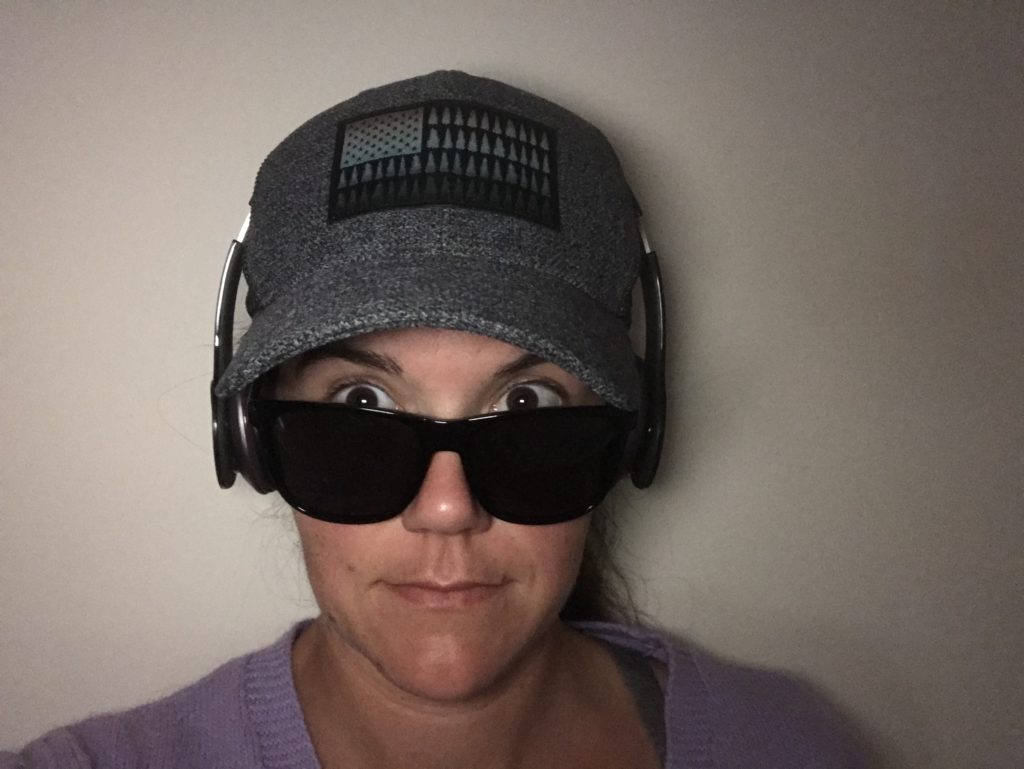Decreasing sensory input may decrease pain during and after exercise.

A few years ago, I attended a Kettlebell strength class at a friend’s studio. At the time I was having chronic shoulder, back, and hip pain that was exacerbated during and after weight training. Due to this I had some trepidation that my pain would increase; but, after speaking with my friend, I decided I would give it a try. I started class and to my surprise I was able to relax, I even felt pain subside throughout and after class.
After this experience, I mulled for quite some time on what was different, the exercises, sets, and reps were all virtually the same, BUT the environment was significantly quieter and less stimulating. I concluded that in fitness we often focus on what exercises we do-aerobic or anaerobic, what kind of split you do, what exercises you incorporate, if the training is linear or not, etc- the stimuli in the environment we exercise in also plays an important role.
How does sensory input in the environment affect us?
Perhaps you’ve noticed a difference in how you feel while in a busy airport vs. a quiet park? Sensory input like light, sound (volume, tempo, and background noise) and smell all affect an individual’s Nervous System State, how you feel. The effect of these factors will vary person to person and can change within a person’s life.
One example that you may have heard of is blue light; blue light stimulates the Sympathetic Nervous System (SNS), fight or flight. While SNS is very important in responding to threats, keeping us awake and alert, etc., it has been shown the blue light can affect sleep due to its effect on the SNS, thus, it is suggested to decrease blue light expose close to bedtime. Instead, activities that stimulate the Parasympathetic Nervous System (PNS), known to increase rest and digestion, like reading, meditation, or music are suggested to help improve sleep.
Who is more susceptible to being overstimulated? There are many, some include
1. Individuals with Functional Pain Disorders
A group of disorders including IBS and Fibromyalgia. While the mechanism differs depending on the disorder, and in many cases more research is needed, it is well documented that those with
Functional Pain Disorders commonly report having noise and light sensitivity (1).
2. Individuals with SNS Hyperarousal
This is when the fight, flight, freeze part of our brain is on overdrive, a constant state of high alert.
Associated with Chronic Pain, due to continuous pain affecting the Central Nervous System (CNS) (2), and PTSD; SNS Hyperarousal manifests differently for everyone. However, common symptoms include physical tension, inability to relax, agitation, sleep disruption, and GI disruption.
When we are on high alert, fight or flight is activated, we are more reactive to sound and other stimuli (5).
3. Chronic Stress
Prolonged periods of stress cause elevated levels of Cortisol (3), which is shown to produce an increased reactivity to sound and stimuli (4).
4. Sensitivity
A term in psychology that is defined as the “strength of capacity to detect and discriminate stimuli…A person with higher sensitivity will perceive a stimulus strongly at a lower level than someone who is less sensitive to stimulus. (6)”
5. Individuals with Ehlers Danlos Syndrome (EDS), Hypermobility, POTS, and Autism:
While these conditions vary, it has been shown that I all hold commonality in terms of heightened sensitivity of stimuli (8).
I think it’s important to remember that while these conditions are known to be associated with overstimulation, anyone can feel overstimulated given the right circumstances.
Why does it matter?
Being overstimulated, no matter what the origin, can increase activation of the SNS, fight-or-flight. While some activation of the SNS is normal, there are some downsides to too much and too often, including anxiety, depression, inflammation, high blood pressure, etc. Ideally, we will have a balance of SNS and PNS, rest-and-digest, activation.
For those who suffer from Chronic Pain, it is particularly important as insufficient PNS with excessive SNS activation may intensify pain and anxiety (7).
So, if you are experiencing Chronic Pain and/or pain with exercise, decrease SNS stimulation from the environment may help decrease pain AND anxiety around exercise.
So how would you know if your exercise environment is overstimulating? Test it!
What I recommend, if you currently have a fitness routine, is to follow the steps below:
- Pay attention to how you feel before, during, and after an exercise class or workout
- Try changing the environment by one of the following: wearing headphones or earplug to change noise levels, wearing a baseball cap to decrease visual input, working out in a different area, working out close to a window, exercising in a different location, turning the music down (if possible)
- Notice how you feel compared to the initial location and/or set up
You may notice some difference, and it may change over time or day to day. Either way, it is worth exploring if a sensory change could help decrease your pain levels around exercise!
Have questions or notes, please send me a comment below. I would love to hear from you!
Resources:
- A possible neural mechanism for photosensitivity in chronic pain – PMC (nih.gov)
- Translating Chronic Pain Research Into Practice: Chronic Pain and the Brain (practicalpainmanagement.com)
- Chronic stress puts your health at risk – Mayo Clinic
- Sensitivity To Sound: The Tremendous Impacts Of Stress And Exhaustion (drlamcoaching.com)
- Auditory Sensitivity: Signs, Causes, Overload and How to Help – by GriffinOT
- Sensitivity definition | Psychology Glossary | alleydog.com
- OVERACTIVE SYMPATHETIC NERVOUS SYSTEM – Dr. Nicholas L. DePace, M.D., F.A.C.C. (franklincardiovascular.com)
- Sensory Issues in Ehlers-Danlos Syndromes and Hypermobility Spectrum Disorders | Science Over a Cuppa